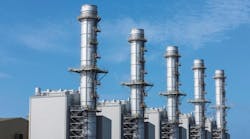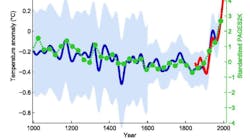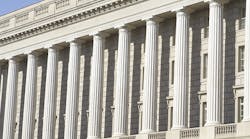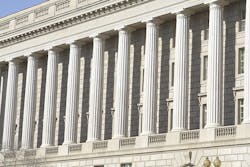When I started this blog in June 2013, I wrote about the energy-efficient-commercial-buildings tax deduction. Since then, I’ve posted three or four times with updates. Contained in §179D of the Internal Revenue Code, it was passed by Congress in 2005 as part of the Energy Policy Act (EPAct 2005). Since then, §179D has been extended after expiring several times. It expired most recently at the end of last year, and its future appears somewhat uncertain. Here—according to the best information I have been able to obtain—is my latest update.
Senate Democrats in the 114th Congress introduced S. 2089, which would expand §179D to include new construction and add a new §179F for qualifying improvements to existing buildings. It proposes a $1-to-$4.75-per-square-foot deduction—based on the efficiency of a building compared with ANSI/ASHRAE/IES 90.1-2013, Energy Standard for Buildings Except Low-Rise Residential Buildings—for energy-efficient new construction; a continuation of the allocation of deductions for government buildings; and the expansion of §179D to include non-profit entities and tribal governments. It also proposes an increase of the existing-building deduction from $1.80 per square foot based on comparison of a building’s energy model to ANSI/ASHRAE/IES 90.1 to as much as $9.25 per square foot based on actual improvement in energy efficiency.
The Reichert/Blumenauer bill, introduced as H.R. 6376 in the 114th Congress, also proposes the expansion of the allocation provision to non-profit entities and tribal governments and would allow partnerships and S-corporations to receive full value of the allocation.
The House Republican Blueprint for Tax Reform contains no reference to §179D. It does, however, mention the repeal of unspecified “special-interest credits and deductions.” This is consistent with House Republicans’ theme of not allowing government to pick “winners” and “losers.” If they allow the full and immediate expensing of capital expenditures, it could provide benefits similar to those of §179D, which is really an accelerated depreciation tool, but it would not benefit non-profit entities.
The Trump Tax Reform Plan also contains no reference to §179D specifically. It contains language proposing the elimination or reduction of “corporate loopholes that cater to special interests, as well as deductions made unnecessary or redundant by the new lower tax rate on corporations and business income.” That new lower tax rate is 15 percent, with a cap on business-interest expense deductions.
There still are several bills on this issue from the 113th Congress floating around. They include the Camp draft, H.R. 1, which would repeal §179D; the Cardin bill, S. 2189, which, much like S. 2089, would expand the existing §179D benefits and add a new §179F for existing buildings (under Cardin’s bill, deductions would be capped at $4 per square foot); and the Building Efficiency Act (Langevin bill), H.R. 2598, which is offered as an alternative to §179D.
If you believe, as I do, that economic incentives will encourage building owners to reduce energy consumption, then write your congressman/congresswoman and senator, and ask them to keep §179D in some form or another.










